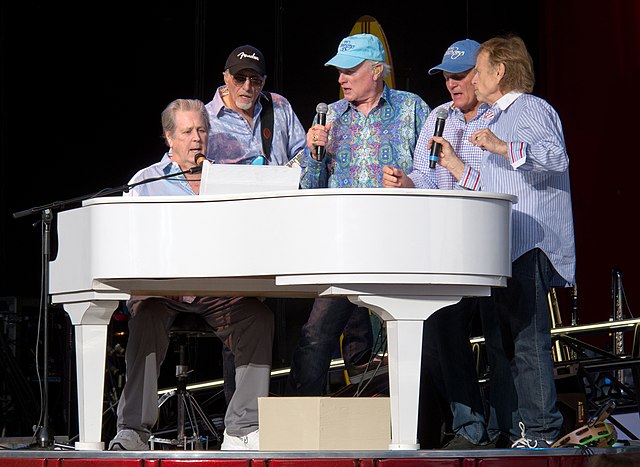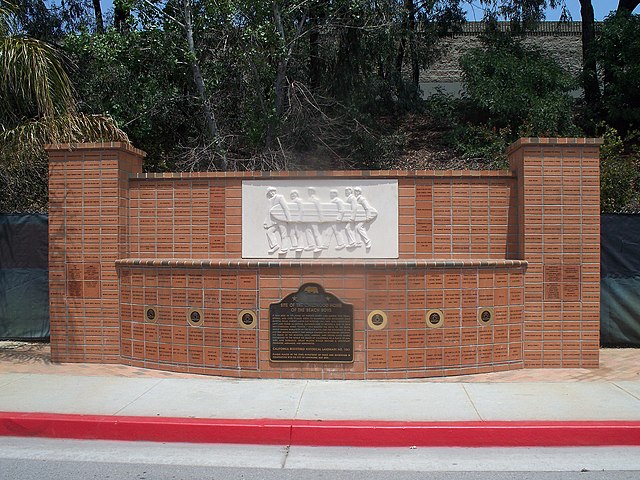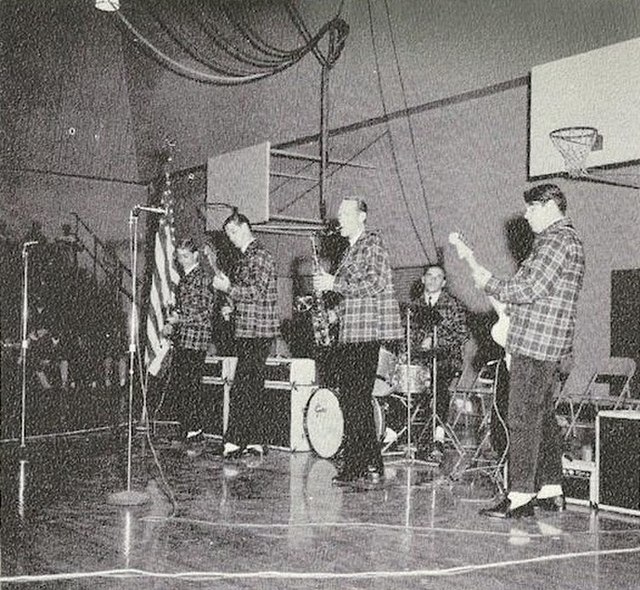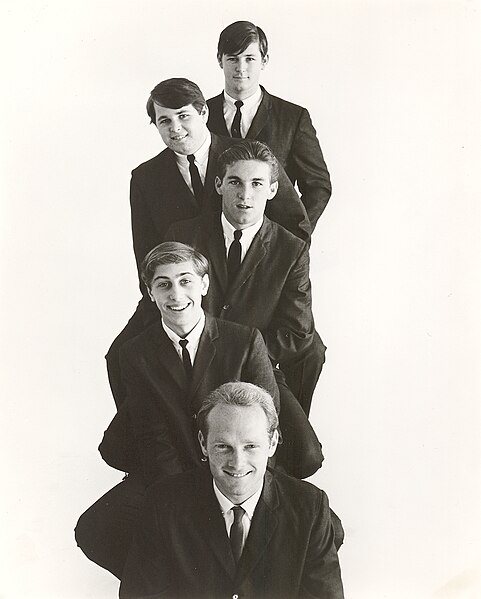Surf's Up is the 17th studio album by American rock band the Beach Boys, released on August 30, 1971 on Brother/Reprise. It received largely favorable reviews and reached number 29 on the U.S. record charts, becoming their highest-charting LP of new music in the U.S. since 1967. In the UK, Surf's Up peaked at number 15, continuing a string of top 40 records that had not abated since 1965.
Surf's Up (album)
The Beach Boys in 1971. Left to right, starting from back row: Mike Love, Brian Wilson, Carl Wilson, Al Jardine, Dennis Wilson, Bruce Johnston.
The artwork of Surf's Up is based on the sculpture "End of the Trail" by James Earle Fraser.
Dennis Wilson while filming Two-Lane Blacktop in 1970. His songs were left off Surf's Up to preserve harmony within the group.
The Beach Boys are an American rock band formed in Hawthorne, California, in 1961. The group's original lineup consisted of brothers Brian, Dennis, and Carl Wilson, their cousin Mike Love, and friend Al Jardine. Distinguished by their vocal harmonies, adolescent-oriented lyrics, and musical ingenuity, they are one of the most influential acts of the rock era. They drew on the music of older pop vocal groups, 1950s rock and roll, and black R&B to create their unique sound. Under Brian's direction, they often incorporated classical or jazz elements and unconventional recording techniques in innovative ways.
The Beach Boys during their 2012 reunion. From left: Brian Wilson, David Marks, Mike Love, Bruce Johnston and Al Jardine.
Historical landmark in Hawthorne, California, marking where the Wilson family home once stood
The Beach Boys, in Pendleton outfits, performing at a local high school, late 1962
The Beach Boys in 1963; top to bottom: Brian Wilson, Carl Wilson, Dennis Wilson, David Marks, Mike Love.








